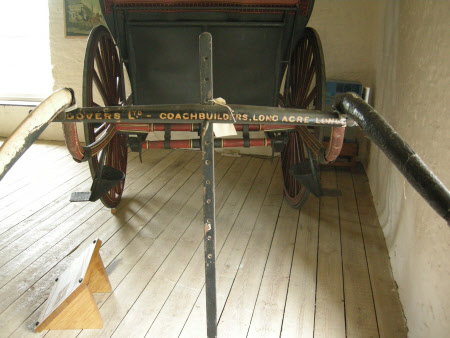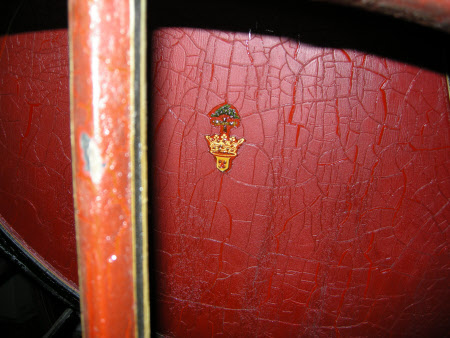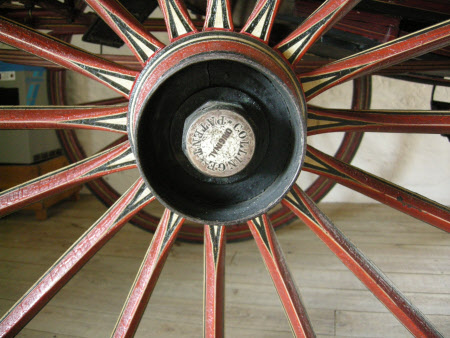Cabriolet
Windovers Ltd
Category
Carriages & other vehicles
Date
circa 1830
Materials
Painted wood body with leather hood, wool cloth and leather uoholstery and two iron shod wheels.
Measurements
198 x 399.5 x 179cm (6ft 6in x 13ft 1 1/4in x 5ft 10 1/2in)
Place of origin
London
Order this imageCollection
National Trust Carriage Museum
NT 272958.1
Caption
Owner driven, the groom or “tiger” (owing to their traditional black and yellow waistcoats) would be seated on the platform behind the body. It is shaped like a nautilus shell and unlike other gig style carriages, the occupant would have been quite well protected from the elements by the hood and an apron. This was the carriage for a man about town; a vehicle that spoke wealth, sophistication and style. In 1837 it was remarked upon, “the most convenient of types for unmarried men to go out at night, and return either from a dinner, the theatre or the houses of parliament”. Only three original cabriolets are believed to have survived in Britain, making this carriage quite important.
Summary
Cabriolet built circa 1830 by Windovers of Long Acre, London. Cabriolet (two wheels) for a single horse. This carriage has a Nautilus shell shaped body with a hinged, framed apron. The leather head is on one pair of curved joints. Sprung on C springs and elbow springs with side springs beneath the shafts. There is a small footman’s cushion for the Tiger with looped leather footman’s holders. A splash guard is beneath the body. Upholstered in red morocco leather. The body panels are painted red with a black frame with white lining. The wheels are painted red with black and white lining. There is a crest on the side panels.
Full description
The Cabriolet was introduced from France about 1810 and, by about 1830, was much refined and improved, it had become THE carriage for a stylish man-about-town to be seen driving himself, the successor of the curricle in this role. In 1837 it was said to be ‘a very convenient vehicle for unmarried men to go out in at night, and return either from a dinner, or from a theatre or opera, or houses of parliament.’ It is a two-wheeled carriage with a body to seat two, shaped like a nautilus shell and fitted with a folding leather head, which is suspended on elbow springs in front and C springs behind. The apron that protects the legs of the occupants is usually stretched over a light wooden frame that is hinged at the bottom to lie against the dashboard when it is open. There is a little platform behind the body to carry a servant, no bigger than a flat race jockey, who was known as a ‘tiger’ because of his yellow and black striped waistcoat, who was carried on no other carriage type. Cabriolets were built for a large horse, so large that the tiger could hardly reach his bridle when he was standing at his head. Horses of the necessary size, style and quality were expensive and, if the owner had an active business and social life, he needed two or three, so only the wealthiest young men could afford to drive a cabriolet. They lasted for twenty or thirty years in fashion, and the cost of horsing them undoubtedly contributed to their demise.
Marks and inscriptions
On front nearside axle cap. : COLLINGE *PATENT* ORIGINAL On front offside axle cap.: COLLINGE *PATENT* ORIGINAL On rear nearside axle cap.: COLLINGE *PATENT* ORIGINAL On rear offside axle cap.: COLLINGE *PATENT* ORIGINAL On shaft stand.: WINDOVERS Ltd - COACHBUILDERS, LONG ACRE, LONDON WC On dashboard.: 1913-577 On label attached to the stand.: 1926-897 On offside wheel axle collet.: T W On offside axle box.: T W On offside axle nuts.: T On axle.: CHARLES COLLINGE PATENT No 64 BRIDGE ROAD LAMBETH
Makers and roles
Windovers Ltd, coach builder



